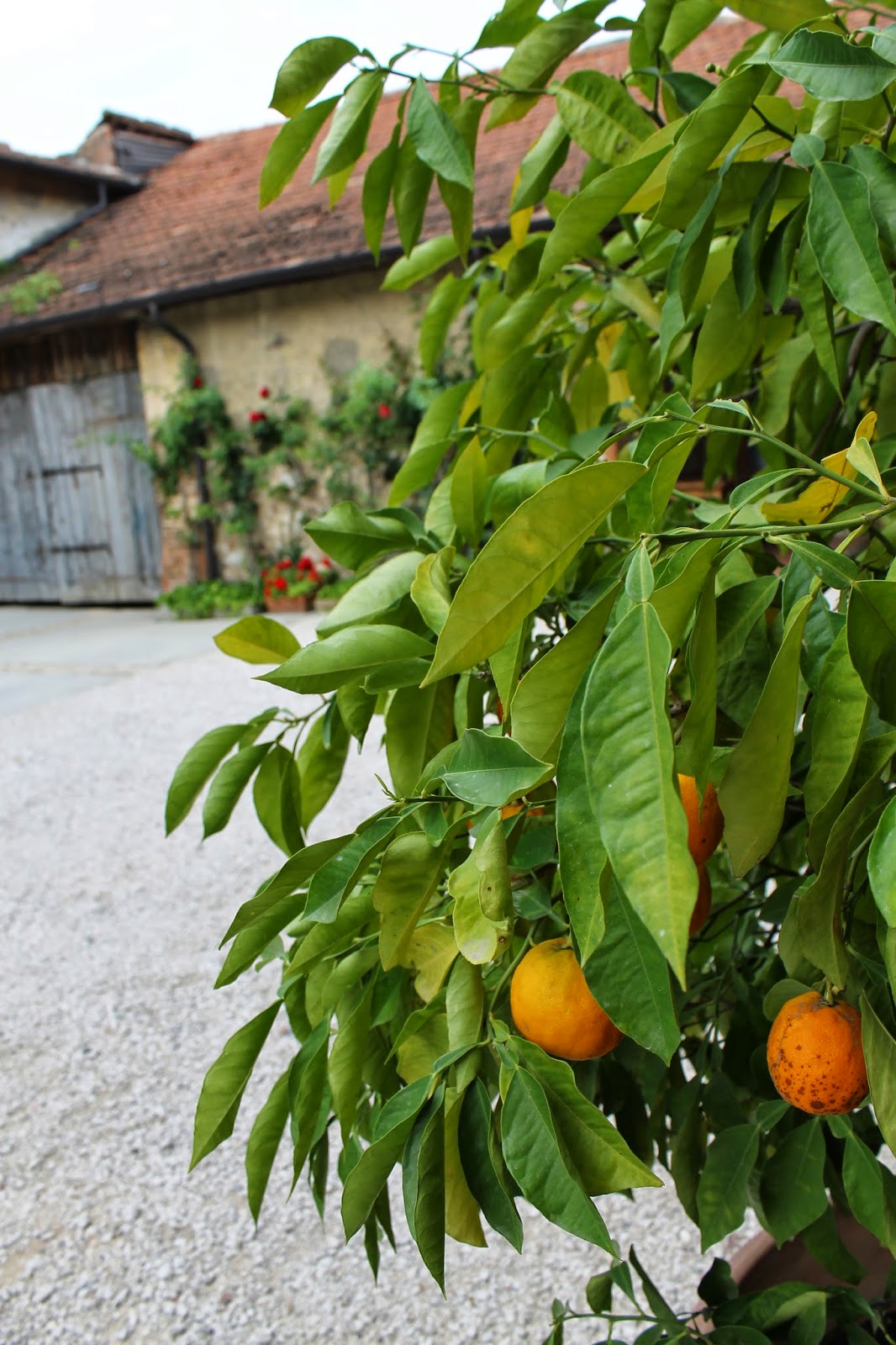One of my very favorite parts of my visits to Italy are all of the details that bombard my senses each and every day. From the amazingly ornamented palaces, the terracotta pots filled with flowers that line the patios and streets, and the patterns that can be found in the cobblestones, these details are seemingly infinite. At every turn there is a new composition made up of line, color, and layers of complex space.
For my final post of this Italian series I would like to share a collection of some of my favorite moments and observations.
Observation 1: This serpentine downspout was perched on the roof of the Borgo San Donino. He seemed to me to be quite interested in devouring some tasty figs from a neighboring fig tree...
Observation 2:...Oh the things that you can do with planters!
Observation 3: All of the colorful climbers and shrubs....
Observations 4 and 5: And of course there are the vistas!
Observation 6: And beautiful tablescapes in old Etruscan wine cellars...
Observation 7: And the elaborate details that cover every square inch of grand Ducal Palaces.
Below are just a few details of the Palazzo Ducale and Palazzo Te in Mantua.
The Palazzo Ducale had a garden room, covered with painted ivy, trellises, and mythological seasonal figures. Each end of the hall had a faux grotto, made up of painted shells, rocks and sculpted figures. This was such an amazing way of simulating nature and bringing the outside world inside.
Naturally, the door beyond the grotto led to an outside courtyard full of formal boxwood hedges. It was framed by a long buttressed hall, adorned with vines and ivy.
Everything inside and out was connected by an imaginary thread, tying art, architecture, and nature together into one intertwined experience.
Observation 8: The Gardens
To end this Tastes of Northern Italy Tour, I will close with a visit to the Parco Sigurta Giardino in Valeggio Sul Mincio. We toured this expansive garden with the owner, and had the opportunity to see the amazing grounds and gardens.
The grand lawns were impressively manicured with rolling hills that were achieved by the original owner making the crucial decision to draw water from the nearby Mincio river. There was a 10 foot tall labyrinth maze, rose alley, lotus reflecting pools, and a diverse collection of Japanese maples. The garden was one of the most impressive that I have seen, and is not surprisingly, highly regarded around the world.
This reflecting pool was built especially to bring the castle, which was outside of the garden property, inside of the garden.
To conclude. This trip, demonstrated in 5 parts, was truly an amazing experience filled with food, art, and the amazing wonders of Northern Italy. I feel so lucky to have visited such beautiful places, been welcomed into homes and businesses as if I were family, and experienced such delicious food and wine. I learned more than I could have ever imagined about this amazing region of Italy in all of its aspects, and realize how the importance of family, tradition, dedication, and hard work, make it everything that it is.
These makers and producers are an inspiration, and I can only hope that I am able to take what I have learned from them and apply it to my own pursuits and endeavors.
So finally, in the words of our tour leader Chiara...Ciao Ciao Goodbye!

























































